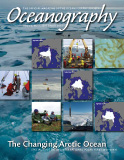Article Abstract
Despite concerns about rapid changes in Arctic Ocean physical forcing and ecosystem function, quantitative knowledge and time series are scarce. The number of reliable physical-biological coupled models and models based on remote sensing is small. To improve our comprehension of carbon flux in the most prominent Arctic Ocean feature, the seasonal ice zone, a possible first step is to evaluate how biogeochemical cycling might develop in the future by examining conceptual models that address climate warming and seasonality in ecosystem development. Here we present three conceptual models of biogeochemical cycling and climate warming in the seasonal ice zone of the Arctic Ocean. They are designed to enhance, in a conceptual and semiquantitative manner, understanding of the possible temporal sequence of future primary production development, its spatial variation, and food availability in the most productive part of the future Arctic Ocean, including pelagic-benthic coupling. We speculate that the largest changes will take place in (a) the northern portions of today’s seasonal ice zone, which will expand to cover the entire Arctic Ocean, and (b) the southern portions, which will be exposed to more thermal stratification. The former change increases and the latter change decreases productivity and supply to the bottom. Lack of nutrient availability means that new production in the central Arctic Ocean will remain low. Blooms of ice and plankton algae may start earlier, depending on snow cover, providing more continuity in food supply for grazers in the upper water column. Weakening of today’s highly episodic primary production in the seasonal ice zone will result in lower average food concentrations for pelagic heterotrophs. We suggest that more of the available energy will be recycled in the pelagic zone, and that vertical export of biogenic matter will be less variable and of reduced quality.

